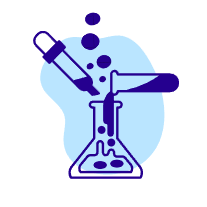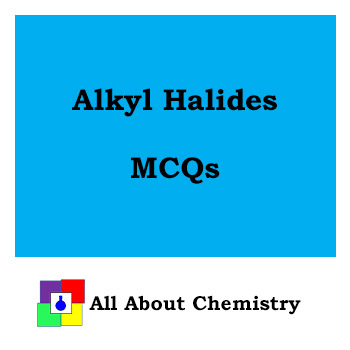Welcome to the fascinating world of haloalkanes and haloarenes, a crucial chapter in your Class 12 Chemistry journey. These organic compounds, characterized by the presence of halogen atoms bonded to alkyl or aryl groups respectively, hold immense significance in both fundamental chemistry and various industrial applications. Understanding their nomenclature, methods of preparation, physical and chemical properties, and their diverse uses is paramount for a strong foundation in organic chemistry.
This set of Multiple Choice Questions (MCQs) is designed to test and reinforce your comprehension of the key concepts within this chapter. Before diving into the questions, let’s take a moment to appreciate the importance and scope of haloalkanes and haloarenes.
Why are Haloalkanes and Haloarenes Important?
The introduction of a halogen atom into a hydrocarbon molecule drastically alters its physical and chemical properties. Halogens are highly electronegative, creating polar carbon-halogen bonds. This polarity influences the reactivity of these compounds, making them versatile intermediates in organic synthesis.
- Synthetic Building Blocks: Haloalkanes and haloarenes serve as excellent starting materials for the synthesis of a wide range of other organic compounds, including alcohols, ethers, amines, carboxylic acids, and many more. Nucleophilic substitution and elimination reactions, characteristic of haloalkanes, are fundamental tools in organic transformations.
- Industrial Applications: These compounds find extensive applications in various industries:
- Solvents: Many haloalkanes, like dichloromethane and chloroform, are widely used as solvents in laboratories and industrial processes due to their ability to dissolve a variety of organic compounds.
- Refrigerants: Certain chlorofluorocarbons (CFCs) were historically used as refrigerants, although their ozone-depleting potential has led to their phasing out and the development of safer alternatives like hydrofluorocarbons (HFCs) and hydrochlorofluorocarbons (HCFCs).
- Pesticides and Herbicides: Haloarenes and some haloalkanes are crucial components of various pesticides, herbicides, and insecticides used in agriculture to protect crops.
- Pharmaceuticals: Many drugs and pharmaceutical intermediates contain halogen atoms, as they can influence the drug’s lipophilicity, metabolic stability, and binding affinity to target biomolecules.
- Fire Extinguishers: Certain halogenated compounds, like halons, were used in fire extinguishers due to their flame-retardant properties.
- Understanding Reaction Mechanisms: Studying the reactions of haloalkanes and haloarenes provides valuable insights into fundamental reaction mechanisms in organic chemistry, such as SN1, SN2, and elimination reactions. The influence of factors like the nature of the halogen, the structure of the alkyl/aryl group, the nucleophile, and the solvent on the reaction pathway is a key learning objective.
- Environmental Concerns: While highly useful, some haloalkanes and haloarenes, particularly CFCs, have posed significant environmental challenges, most notably ozone layer depletion. Understanding these issues is crucial for developing sustainable chemical practices and safer alternatives.
What to Expect in these MCQs:https://www.allaboutchemistry.net/category/mcq/
This set of MCQs will cover a broad spectrum of topics within the “Haloalkanes and Haloarenes” chapter, including:
- Nomenclature: IUPAC and common names of haloalkanes and haloarenes.
- Nature of C-X Bond: Polarity and bond length.
- Methods of Preparation: From alcohols, hydrocarbons, and halogen exchange reactions.
- Physical Properties: Boiling points, melting points, solubility, and density.
- Chemical Reactions of Haloalkanes: Nucleophilic substitution reactions (SN1 and SN2 mechanisms), elimination reactions (β-elimination), and reactions with metals.
- Chemical Reactions of Haloarenes: Electrophilic substitution reactions and nucleophilic substitution reactions (with specific conditions).
- Polyhalogen Compounds: Dichloromethane, chloroform, carbon tetrachloride, DDT, and freons – their properties and uses.
- Distinguishing Tests: Simple chemical tests to differentiate between different types of halides.
By attempting these MCQs, you will not only assess your understanding of the theoretical concepts but also develop your problem-solving skills and your ability to apply these concepts to specific scenarios. Approach each question thoughtfully, recall the relevant principles, and choose the most appropriate answer. Good luck! Let’s begin our exploration of the halogenated hydrocarbons.
Page 1

Page 2

Page 3
















